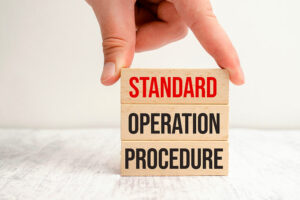Automation has become a buzzword – it’s right up there with artificial intelligence and digital transformation. But it’s more than just a go-to phrase for professional services firms. It’s becoming the way forward.
Professional Services Automation allows lawyers, auditors, and IT consultants to keep up with client expectations and stay ahead of the competition. It enables them to reduce costs and increase profits. And it’s for this reason that, when choosing PSA software, these companies need to understand what automation is available, where it’s going, and how to implement it effectively.
What PSA Software Does
At its core, PSA software automates certain tasks in professional services businesses. These tasks fall under labour utilization, project management, reporting, project documentation, billing, and time recording functions. At its most basic, PSA software could provide timesheet systems for a task such as expense reporting. At its most complex, the software could be an entire customer relationship management suite.
The goal of PSA is to allow management to get a better view of operations so they can increase profitability and efficiency through better business processes.
In 2017, SPI Research conducted an end-user survey that found a significant return on investment with PSAs when it came to the following key performance indicators:
- Enhanced profit margins
- Quicker invoicing and staffing workflows
- Greater resource utilization rates
- Reduced project cancellation rates
- Reduced revenue leakage
- A higher ratio of under-budget and on-time project deliveries
The study created a model 172-person professional services firm. They found that if the firm invested roughly $200,000 in PSA software—both the software license fees and the cost of implementation—they could expect a combined savings and revenue of about $23 million.
This type of PSA implementation would likely be the most comprehensive available, meaning that it would offer robust features and be integrated with the company’s payroll, accounting, and customer relationship management systems.
The Future Of The Professional Services Automation Market
The PSA market is beginning to take off. More and more professional services firms are starting to realize the full potential of automation systems. In 2017, the PSA market grew to be worth over $700 million.
Over the next five years, industry experts expect the market to grow at a compound annual growth rate of nearly 12%. This means that by 2022 the PSA market will surpass the billion-dollar value and reach roughly $1.2 billion.
The reason that this growth is occurring, though, goes beyond the fact that leaders in professional services firms are seeing that there’s a lucrative return on investment associated with PSA software.
Excitement about PSA can be tied to several changes in these industries. One is the need for greater mobility. Service consultants’ needs are more effective when they’re no longer tied to their desk, and PSA software is starting to free them up. Additionally, more and more firms—especially start-ups—need more flexibility and systems that scale. PSA solutions offer this.
And finally, there’s the simple fact that automation, in all of its capacities, is a growing trend across every sector.
What To Consider When Choosing PSA Software
While professional services firm leaders know that they need to integrate PSA software into their processes, it can be difficult to make a choice. The variety of software offerings is vast and intricate. Different platforms offer countless features. They come at disparate prices.
The truth is that even though comparing PSA platforms is a challenge, it’s not impossible. Company leadership can find their ideal platform by looking at four metrics.
The Mobility Of The Platform
Professional services consultants, such as tech support teams, need mobility. They work with customers in different locations and they need to be fully equipped at all times. Therefore, when professional services leaders are reviewing PSA platforms, they should prioritize three capabilities: Collaboration features and tools, ease of access, and mobile clients. Additionally, it’s important to verify that the vendor supports the operating system that’s used on the firm’s existing devices.
The Analytics Offered And The Usability Of The Dashboard
Data and analytics are of rapidly growing importance. Data can be used to more effectively serve clients, improve employee satisfaction, direct resources to where they’re most needed (or most lucrative), and increase profits. Good quality analytics will also stop leakage in the business by spotting resource loads and operational bottlenecks.
Today, analytics (also known as BI – Business Intelligence) is essential for strategic business decisions. PSA platforms understand this, and it’s why they tend to offer more complex reports and real-time dashboards. They help managers to have total oversight of the operation, and of individual projects, departments and clients.
It helps them choose between profitable and not so profitable projects, and tidy up any loose ends that team members have missed. When it comes to choosing which one, though, you should ensure that the out-of-box dashboard is easy to use and that it won’t be necessary to employ a data scientist to set up the dashboard or understand the outcomes.
The Deployment Model
Different deployment models have different pros and cons. On-premise, SaaS/on-demand, and hosted will all work well depending on each individual firm’s needs, current infrastructure, and budget. These need to be weighed against each other when looking at a PSA platform. Firms need to see what fits into the budget and identify how much functionality is required.
The Current ERP And CRM Platform
Professional services firms usually have existing CRM and ERP systems put in place. If the firm purchases a PSA platform without checking to see how integration with these systems works (if at all), they could end up running siloed pieces of software that create more work than it’s worth.
When the PSA platform is integrated with an ERP system, it can automate project billing—which is often a task that can create significant problems for firms—as well as automating DSO tracking and vendor-specific objective evidence. When the PSA platform is integrated with a CRM system is allows management to have deeper insights into contract and account specifics, the quoting process, and the transfer of sales into active projects.
The trouble with this approach is that the core system that runs the business becomes something of a Frankenstein solution assembled in a piecemeal fashion. A much better approach is to implement a fully integrated 360-degree solution that includes ERP and CRM functionality natively.
ServiceTree is PSA, ERP and CRM all rolled into one, and it’s been designed that way from the very beginning. Naturally, we’re very proud of our system, and as an MSP ourselves, we believed it was the only way to go. We knew from working at the coalface, what an end-to-end solution would look like and what it needed to do, so that’s exactly what we built.
If you’d like to see what ServiceTree could do for your business, reach out today, and we’ll be happy to answer your PSA software questions.





